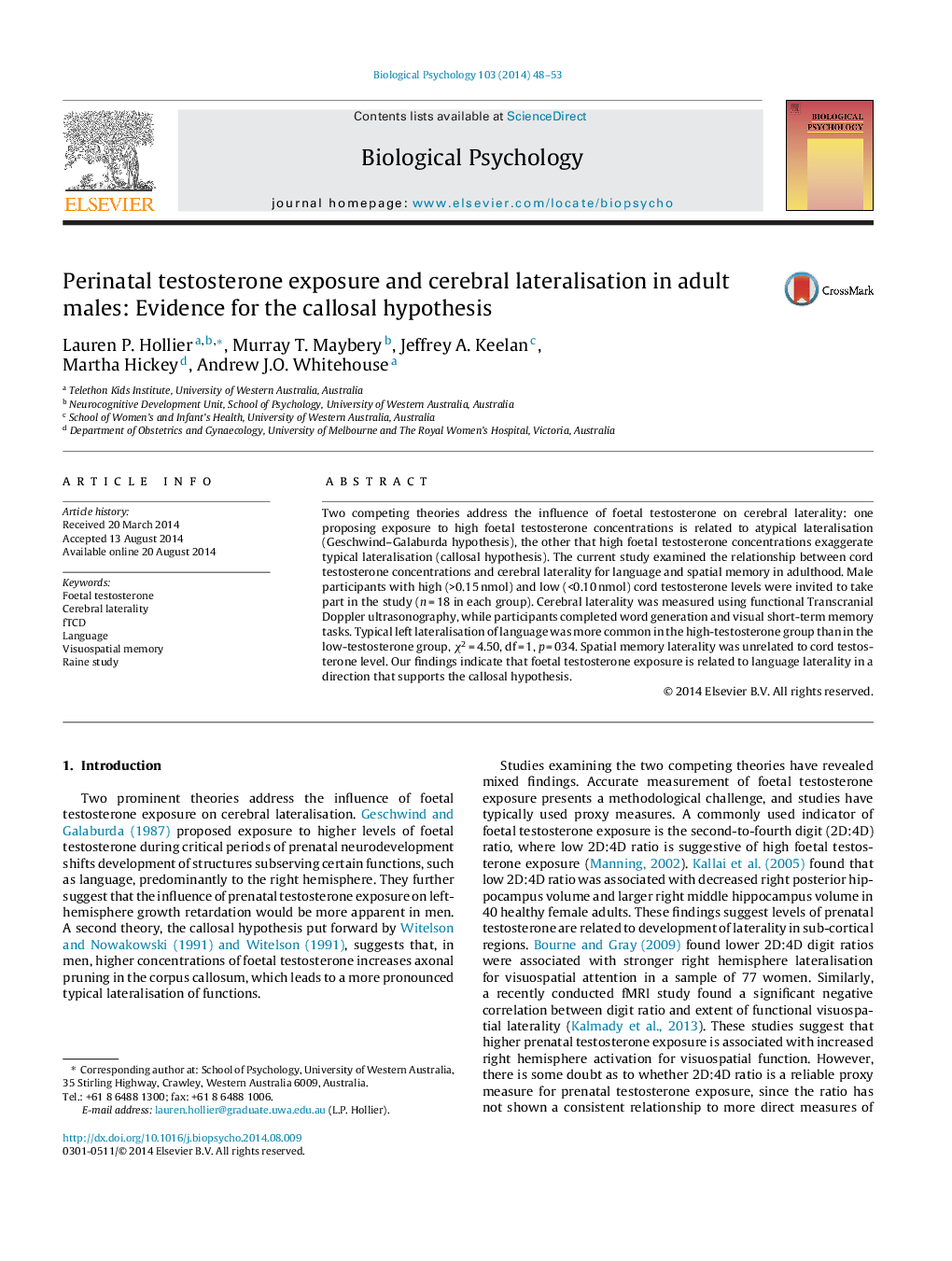| Article ID | Journal | Published Year | Pages | File Type |
|---|---|---|---|---|
| 7278698 | Biological Psychology | 2014 | 6 Pages |
Abstract
Two competing theories address the influence of foetal testosterone on cerebral laterality: one proposing exposure to high foetal testosterone concentrations is related to atypical lateralisation (Geschwind-Galaburda hypothesis), the other that high foetal testosterone concentrations exaggerate typical lateralisation (callosal hypothesis). The current study examined the relationship between cord testosterone concentrations and cerebral laterality for language and spatial memory in adulthood. Male participants with high (>0.15 nmol) and low (<0.10 nmol) cord testosterone levels were invited to take part in the study (n = 18 in each group). Cerebral laterality was measured using functional Transcranial Doppler ultrasonography, while participants completed word generation and visual short-term memory tasks. Typical left lateralisation of language was more common in the high-testosterone group than in the low-testosterone group, Ï2 = 4.50, df = 1, p = 034. Spatial memory laterality was unrelated to cord testosterone level. Our findings indicate that foetal testosterone exposure is related to language laterality in a direction that supports the callosal hypothesis.
Related Topics
Life Sciences
Neuroscience
Behavioral Neuroscience
Authors
Lauren P. Hollier, Murray T. Maybery, Jeffrey A. Keelan, Martha Hickey, Andrew J.O. Whitehouse,
